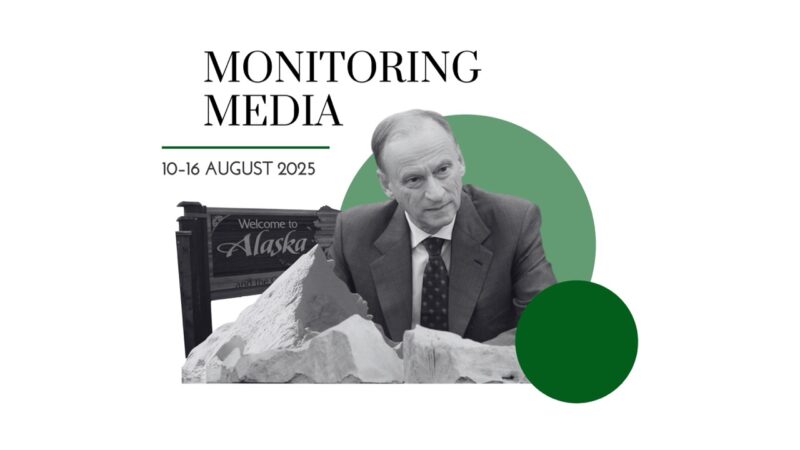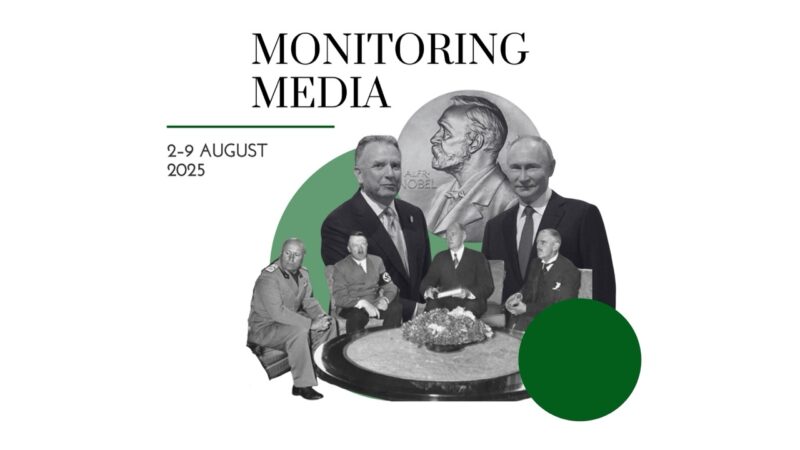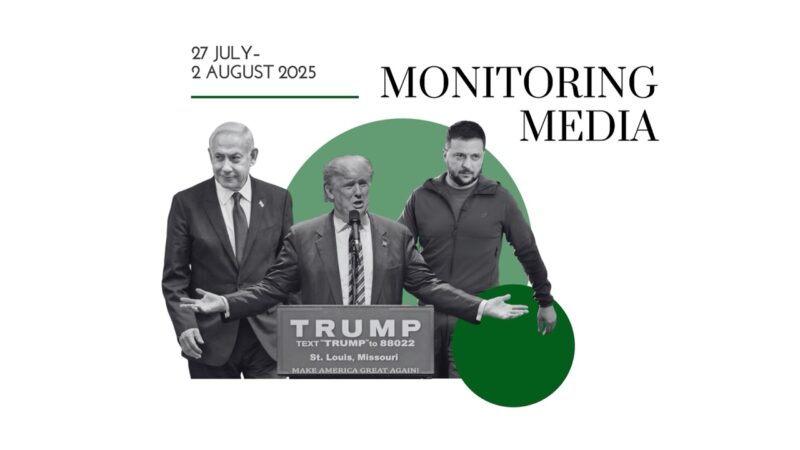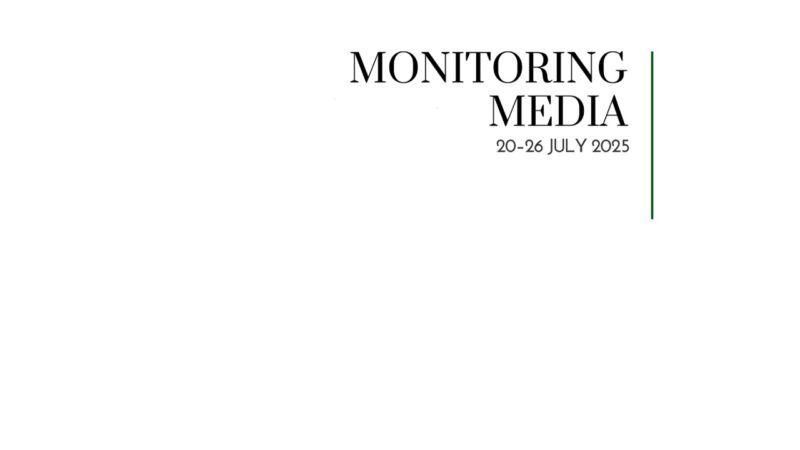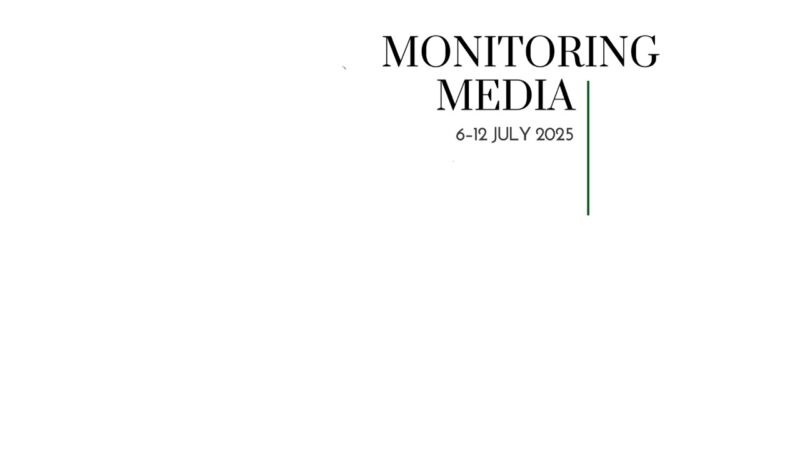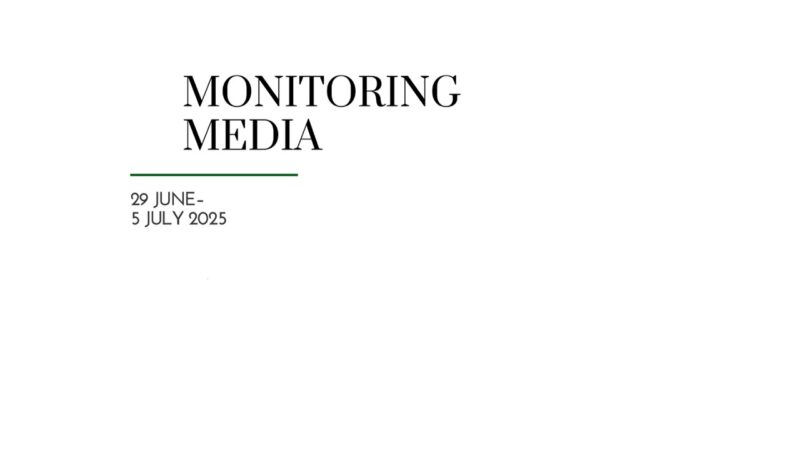Putin’s balancing act is collapsing
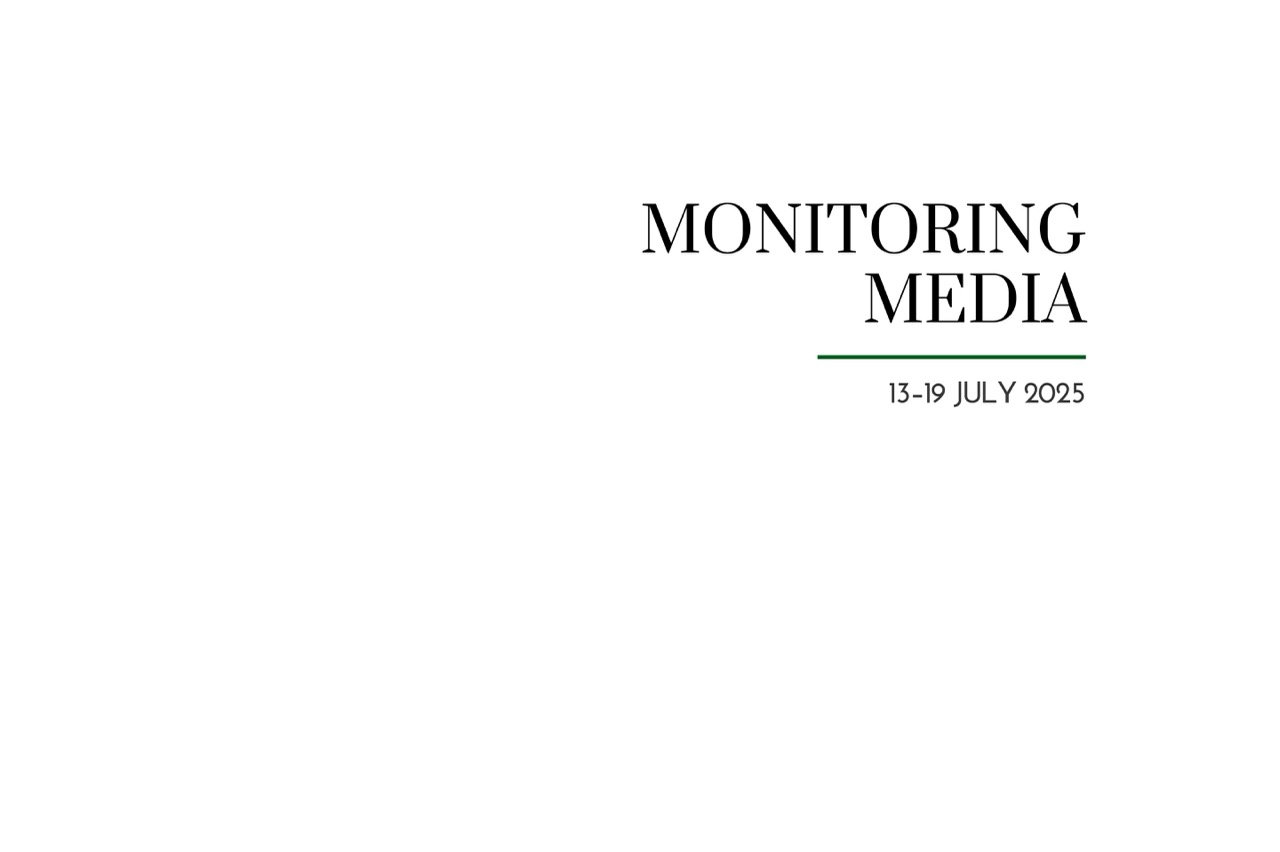
CIUS weekly report on North American media coverage of Ukrainian affairs, 13–19 July 2025
Seven publications (Foreign Affairs, Foreign Policy, The Wall Street Journal, The Atlantic, The New York Times, The Globe and Mail, and USA Today) were selected to prepare this report on how Ukraine has been portrayed in the North American press during the past week. The sample was compiled based on their impact on public opinion as well as on their professional reputation, popularity among the readership, and topical relevance. These publications represent centrist viewpoints on the political spectrum.
This MMS report covers only the most-read and relevant articles about Ukraine, as ranked by the respective North American publications themselves in the past week. Its scope covers promoted articles on home pages and articles from special sections on Ukraine, with the hashtag #Ukraine, from the paper editions of the publications, and about Ukraine from opinion columns and editorials.
Featured topics
- The world and Ukraine: Ukrainian democracy is under threat; Trump’s shift on Ukraine shows he’s prioritizing US strategic interests; China’s role in Russia’s war shows why Canada must toughen sanctions.
- Russia at war: Russia intensifies its drone war; Putin humiliated Trump; Putin’s balancing act is collapsing.
MMS summaries
Russia intensifies its drone war. Jillian Kay Melchior (Wall Street Journal) believes that last week’s massive attacks by Russian drones on Ukrainian cities should be a wake-up call for the West. Operation Spiderweb, carried out by Ukraine last month, targeting air bases deep inside Russia and destroying dozens of strategic bombers, revealed not only Russia’s vulnerability to modern methods of warfare but also the vulnerability of the US and Europe. However, according to the author, Western allies have regrettably not fully considered or properly reacted to the fact that the mass attacks by Russian drones on peaceful cities in Ukraine also exploit Kyiv’s vulnerability. Such attacks are exhausting Ukraine’s air defence capabilities, and Western equipment cannot compete with them: “Shahed-style drones are cheap, and the West’s interception solutions are expensive.” The West must invest in Ukrainian weapons to counter this threat. Otherwise, by the end of this summer, single attacks of 1,000 Russian drones will become a reality.
Putin humiliated Trump. Jonathan Lemire (Atlantic) argues that the real reason why President Donald Trump has become tougher on Russia is his resentment of President Vladimir Putin—but this position does not indicate a change in the White House’s attitude toward the Kremlin. President Trump “did not develop a new fondness for Ukraine or its president, Volodymyr Zelensky. He did not abruptly become a believer in the traditional transatlantic alliances prized by his predecessors as a counterweight to Moscow. Rather, Trump got insulted.” President Trump took offence at President Putin for putting him in the position of a junior partner. That is why he authorized a significant shipment of US weapons to Ukraine via NATO and threatened Russia with new tariffs if the war does not end in 50 days. According to Lemire, the measures announced by President Trump are unlikely to change the overall course of the war, “but they could blunt Russia’s momentum in the conflict and, in turn, its desire to prolong the war. The moves also offered reassurances to Ukraine and Europe that Washington could still be a partner in their fight.”
Ukrainian democracy is under threat. Paul Hockenos (Foreign Policy) insists that Washington’s shift in foreign policy priorities has dealt a blow not only to Ukraine’s defence capabilities but also to democratic transformation in the country. European partners are trying to fill the gap left by the White House’s recent reticence: “At the Ukraine Recovery Conference in Rome on July 10–11, the Europeans above all reached deep into their coffers to raise about 3.55 billion euros ($4.15 billion) for recovery, municipal infrastructure, energy, heat supply, transport, and business support.” However, Europe lacks the resources and determination to replace the funding for democracy and human rights programmes that was cut earlier this year by Washington: “The U.S. Agency for International Development (USAID) was responsible for $37.6 billion in aid to Ukraine since the start of the full-scale war, for humanitarian aid, development assistance, and direct budget support.” While other donors, including the EU, contribute to the development of civil society and implementation of reforms in Ukraine, the US had been a particularly effective ally of civil society in promoting the most challenging reforms, particularly in the judicial and electoral spheres. According to Hockenos, “Democracy…is after all what this war is about.”
Putin’s balancing act is collapsing. Michael Kimmage and Maria Lipman (Foreign Affairs) argue that the Russo-Ukrainian war could destroy the balancing act maintained by the Kremlin within Russia. In his quarter-century in power, President Vladimir Putin has achieved an eerie calm in the country: “Shortly after assuming the presidency in 2000, he tied once-independent oligarchs to the state, while placating the growing middle class with rising living standards and greater material comforts. Gradually, he assembled a ruling ideology from bits and pieces of Russia’s past, one that was nationalistic enough to inspire pride but not so nationalistic as to be divisive.” However, another reality overshadows this carefully crafted balancing act: “Putin has long promised Russians a country gilded with ambition, power, and glory.” Moscow’s failures in its war against Ukraine undermine this narrative: “At the moment, Russians are far from revolting against the regime, but they could start to turn against the war, refusing to enlist and publicly questioning the merits of this seemingly endless conflict.” The Kremlin may have to resort to sacrificing balance in order to be able to continue its efforts to reimpose control over Ukraine: “Russia’s [desired] rise to greatness may be Sisyphean for Putin, but he will go to extreme lengths to avoid defeat. In Ukraine, Putin will risk everything. For him, equilibrium—the complacency he has inculcated in the Russian population—is in danger of becoming a faded luxury. The grim necessity is the war.”
Trump’s shift on Ukraine shows he’s prioritizing US strategic interests. Dace Potas (USA Today) argues that President Donald Trump’s recent decision to resume US arms shipments to Ukraine marks a significant shift away from isolationist tendencies and toward a more pragmatic foreign policy that is rooted in America’s strategic interests. After months of freezing aid and insisting he could end the war “on his first day in office,” Trump has become increasingly frustrated with Russian President Vladimir Putin’s refusal to negotiate, realizing that “it is in the United States’ interest to continue supporting Ukraine in its war against Russia.” The author highlights how Trump’s approach evolved from pausing assistance in hopes of a quick diplomatic resolution to actively backing Ukraine’s fight, even if it means prolonging the war. Potas sees this as a rebuke of “the isolationist right [which] lives in a fantasy,” noting that the POTUS now recognizes “the strategic importance of Ukraine continuing to exist after this war is over.” While cautioning that Trump could yet again reverse the present course, the author welcomes his apparent return to a more assertive foreign policy stance, reminiscent of his first term. The shift is seen as both a response to the reality of Russia’s intransigence and a willingness to risk alienating his own less-hawkish allies. Trump’s change of heart is preferable to his earlier “anti-intervention daydream,” Potas notes, arguing that it is “better late than never” for the president to embrace a more strategic role in supporting Ukraine.
Trump’s renewed support for Ukraine eases tensions but leaves Europe wary. Steven Erlanger (New York Times) highlights the recent shift in Donald Trump’s stance on Ukraine and Europe, but questions remain about its durability and implications for transatlantic relations. Trump has decided to resume weapons shipments to Kyiv, saying, “We’re going to send some more weapons. We have to. They have to be able to defend themselves,” signalling a temporary hardening of his position toward Vladimir Putin. He also praised Europe’s commitment to the war, adding: “Having a strong Europe is a very good thing”—a sentiment he has not previously shared. European leaders welcomed the move but remain cautious, with analysts warning that Trump’s threats, such as imposing tariffs on Russia’s energy customers, lack credibility, and his 50-day ultimatum is unlikely to sway Putin, who believes that he can outlast the West. At the same time, Europe is accelerating its military efforts and deepening its cooperation with Ukraine despite lingering skepticism regarding Trump’s long-term commitment. European countries are buying American weapons like Patriot missiles and coordinating aid for Ukraine, while leaders such as France’s Emmanuel Macron stress that “American disengagement” leaves Europe no choice but to bolster its own defence. This shift has also seen the UK and France agreeing to coordinate their nuclear arsenals if Europe comes under extreme threat. However, as noted by French defence expert François Heisbourg, even modest spending increases will take years to reach NATO’s new targets. Analysts argue that Trump’s renewed anger at Putin may bring short-term relief for Ukraine, but it “does nothing to solve the problems of the trans-Atlantic relationship,” leaving Europe to prepare for an uncertain future.
Republicans reverse course on aiding Ukraine. Robert Jimison (New York Times) notes that formerly staunch Republican opposition to aiding Ukraine is rapidly softening as party members fall in line behind Donald Trump’s sudden pivot to support new arms shipments. The shift highlights Trump’s tight grip on the GOP, even on foreign policy issues where his stance has previously contradicted long-standing conservative orthodoxy. Lawmakers who once blasted military aid to Kyiv are now defending Trump’s announcement, portraying it as strategic rather than contradictory. Representative Derrick Van Orden, who previously warned against “endless wars,” now calls Trump “the peacemaker in chief” and pledges “100-percent, absolute unequivocal support.” Similarly, Representative Warren Davidson, an earlier critic, praised Trump’s plan to sell weapons through NATO allies, insisting “this is not our war,” even as it effectively sustains Ukraine’s defence. However, the reversals have exposed deep fractures within the Republican Party, particularly among members who campaigned on ending US involvement in foreign wars, according to Jimison. Figures like Representative Marjorie Taylor Greene argue that this move betrays voters, saying, “No one’s walking around thinking about Ukraine. No one’s walking around thinking about Russia. They’re just not.” Others remain skeptical of Trump’s approach, which emphasizes sustaining Ukraine’s military in order to pressure Russia into a ceasefire rather than ensure a battlefield victory. Still, many Republicans are recalibrating their rhetoric, highlighting the transactional nature of Trump’s plan and signalling loyalty to his evolving strategy. As Senator Rick Scott put it: “He’s going to do everything he can to get peace, and I hope Putin takes him seriously”—despite previously denouncing similar aid under Biden.
China’s role in Russia’s war shows why Canada must toughen sanctions. Marcus Kolga (Globe and Mail) highlights how Russia’s escalating drone campaign against Ukraine is being fuelled by Chinese technology and components, making Beijing complicit in the crimes of the Russo-Ukrainian war. Russian forces have increasingly relied on Iranian-designed Shahed drones, rebranded “Geran,” to terrorize civilians and destroy critical infrastructure. In June alone, 5,429 Russian drones and ballistic missiles struck Ukrainian targets, causing 232 civilian deaths, with analysts (and the Ukrainian military — MMS) warning that Moscow could soon launch 1,000 drones in a single night. Ukrainian security services have recovered drones that contain “Chinese-origin components,” while a Bloomberg investigation revealed direct partnerships between the Russian firm Aero-HIT and Chinese suppliers. Despite this evidence, Canada lags behind its allies in sanctioning Chinese and Hong Kong entities; Ottawa has listed only 20 companies, compared to over 200 sanctioned by the United States. Kolga argues that Canada must urgently strengthen its economic sanctions to disrupt Russia’s drone supply chain and hold China accountable for enabling the Kremlin’s war. Ukraine recently sanctioned five Chinese firms for supplying critical components like “engines, carbon fibre airframes, electronics, navigation systems and antennas,” yet Canada has not matched such measures. With Russia’s drone production tripling in 2025 and “thousands of lives at stake,” the author stresses that cutting these supply chains is vital to protecting Ukrainian civilians.
